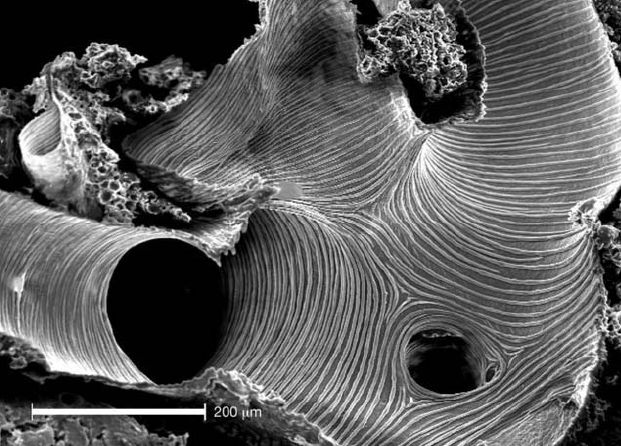Insects Hold Breath for Days Because Air Could Kill Them

Scientists have known that some insects can hold their breath for hours or even days. A new study suggests why: Too much air would kill them.
Insects breathe in and out through holes, called spiracles, all over their bodies. Some insects close the holes now and then. Scientists had thought maybe they stopped breathing to limit water loss or to adapt to environments loaded with carbon dioxide, but no solid evidence supported either idea.
The new study suggests that while oxygen is vital to an insect, too much can damage tissue. The opening and closing of spiracles is controlled in a way that exhales carbon dioxide as needed without inhaling too much oxygen.
The research was done by Stefan Hetz of Humboldt University in Berlin and Timothy Bradley of the University of California, Irvine. It is detailed in the Feb. 3 issue of the journal Nature.
Insects pack the equivalent of lungs into much of their bodies. Tubes of air branch throughout the body -- an efficient breathing system for energetic critters. The setup transfers air and carbon dioxide in and out more than 100 times faster than doing it through blood, as with humans.
The researchers examined pupae of the moth Attacus atlas and found it manages to keep oxygen levels constant.
"Previously, physiologists have reasoned that the spiracles open during exercise to provide more oxygen," Hetz and Bradley write. "We would argue that they open because they are released from their need to close."
Get the world’s most fascinating discoveries delivered straight to your inbox.
The scientists provide "compelling evidence" that insects manage their breathing not so much to acquire oxygen as to avoid it, said Thorsten Burmester of the Institute of Zoology at the University of Mainz in Germany. Burmester was not involved in the research.
"Their hypothesis has far-reaching implications for how we view animal respiration," Burmester writes in an accompanying analysis in the journal.
Robert is an independent health and science journalist and writer based in Phoenix, Arizona. He is a former editor-in-chief of Live Science with over 20 years of experience as a reporter and editor. He has worked on websites such as Space.com and Tom's Guide, and is a contributor on Medium, covering how we age and how to optimize the mind and body through time. He has a journalism degree from Humboldt State University in California.



